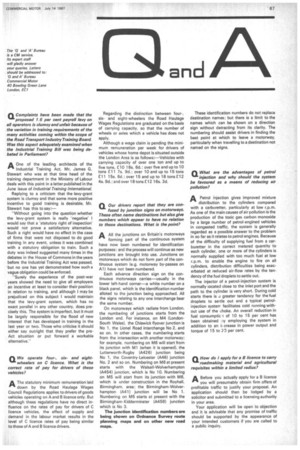Our drivers report that they are con fused by junction
Page 69

If you've noticed an error in this article please click here to report it so we can fix it.
signs on motorways. These often name destinations but also give numbers which appear to have no relation to those destinations. What is the point?
AAll the junctions on Britain's motorways
forming part of the continuous system have now been numbered for identification purposes; and the process will continue as new junctions are brought into use. Junctions on motorways which do not form part of the continuous system (e.g. motorway by-passes on Al) have not been numbered.
Each advance direction sign on the continuous motorways carries—usually in the lower left-hand corner—a white number on a black panel, which is the identification number alloted to the junction being approached. All the signs relating to any one interchange bear the same number.
On motorways which radiate from London, the numbering of junctions starts from the London end. For instance, on M4 (London South Wales), the Chiswick flyover junction is No 1, the Lionel Road interchange No 2, and so on. In other cases, the numbering starts from the intersection with another motorway; for example, numbering on M6 will start from its junction with M1 (when it is opened), the Lutterworth-Rugby (A426) junction being No 1, the Coventry-Leicester (A46) junction No. 2 and so on. Numbering on Me at present starts with the Walsall-Wolverhampton (A454) junction, which is No 10. Numbering on M5 will start from its junction with M6.
which is under construction in the Royhall, Birmingham, area the Birmingham-Wolverhampton (A41) junction will be No 1. Numbering on M5 starts at present with the Birmingham-Kidderminster (A456) junction which is No 3.
The junction identification numbers are being shown on Ordnance Survey route planning maps and on other new road maps. These identification numbers do not replace destination names; but there is a limit to the names which can be shown on a direction sign without detracting from its clarity. The numbering should assist drivers in finding the best point at which to leave a motorway, particularly when travelling to a destination not named on the signs.


























































































































